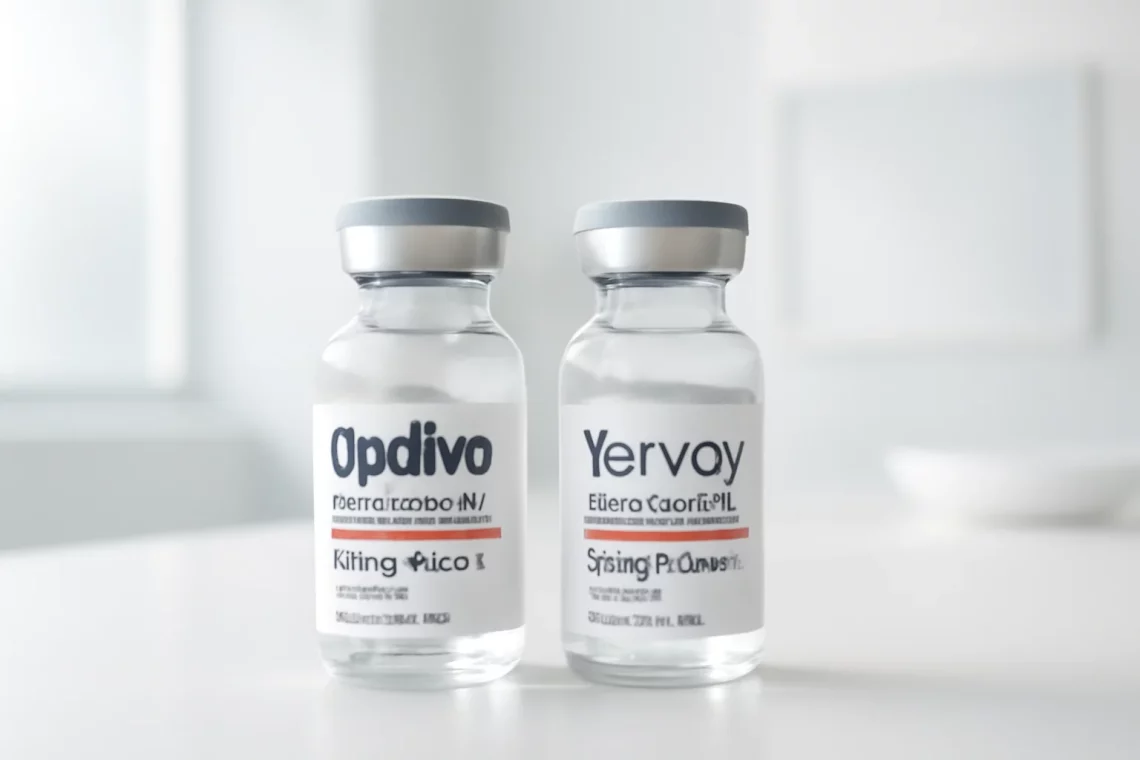
Opdivo vs Yervoy: A Comprehensive Comparison of Cancer Treatments
In recent years, the field of oncology has witnessed significant advancements, particularly in immunotherapy. Among the various treatment options available, Opdivo and Yervoy have emerged as two prominent therapies for several types of cancer. Both drugs are designed to harness the body’s immune system to fight cancer cells, but they operate through different mechanisms and are often used in conjunction with one another.
Opdivo, known generically as nivolumab, is a monoclonal antibody that blocks a protein called PD-1, which cancer cells exploit to evade detection by the immune system. By inhibiting PD-1, Opdivo enhances the ability of T-cells to recognize and attack cancer cells. On the other hand, Yervoy, or ipilimumab, targets CTLA-4, another checkpoint protein that downregulates immune responses. By blocking CTLA-4, Yervoy increases the activation and proliferation of T-cells, further aiding the immune response against tumors.
The choice between Opdivo and Yervoy can be complex, involving various factors such as the type of cancer, stage of the disease, previous treatments, and individual patient characteristics. Understanding these therapies’ unique attributes and potential side effects is crucial for patients and healthcare providers alike as they navigate the challenging landscape of cancer treatment.
Mechanisms of Action
Opdivo and Yervoy function through distinct yet complementary mechanisms that enhance the immune system’s ability to target and destroy cancer cells.
Opdivo, as a PD-1 inhibitor, works by blocking the interaction between PD-1 and its ligands, PD-L1 and PD-L2, found on the surface of some cancer cells. This interaction is a key mechanism that tumors use to evade immune detection. When PD-1 is blocked, T-cells can recognize and attack tumor cells more effectively. This has been particularly beneficial in treating melanoma, lung cancer, and kidney cancer, among others.
The efficacy of Opdivo is supported by numerous clinical trials demonstrating improved overall survival rates in patients with advanced cancers. Notably, the drug can lead to long-lasting responses in some patients, which is a significant advantage in cancer treatment where traditional therapies may not provide sustained benefits.
Yervoy, in contrast, targets CTLA-4, a protein that acts as a brake on T-cell activation. By inhibiting CTLA-4, Yervoy enhances T-cell activation and proliferation, supporting a more robust immune response against tumors. This mechanism is particularly crucial in the early stages of T-cell activation, making Yervoy a valuable option in combination therapies.
When used together, Opdivo and Yervoy can produce synergistic effects, leading to improved outcomes for patients with certain cancers. The combination therapy has been shown to increase response rates compared to either drug alone, although it may also result in a higher incidence of side effects. This highlights the importance of individualized treatment plans to maximize efficacy while managing potential risks.
Indications and Approvals
Opdivo and Yervoy have received approval for various cancer indications, reflecting their versatility and effectiveness in treating multiple tumor types.
Opdivo is primarily indicated for the treatment of melanoma, non-small cell lung cancer (NSCLC), renal cell carcinoma, and several other malignancies. Its approval in these areas is based on robust clinical evidence demonstrating significant improvements in patient outcomes. For instance, Opdivo has shown substantial benefits in overall survival in patients with advanced melanoma, both as a monotherapy and in combination with Yervoy.
Yervoy is also approved for melanoma, but its indications extend to include certain cases of colorectal cancer and other cancers where CTLA-4 inhibition may be beneficial. The use of Yervoy has been particularly impactful in patients with unresectable or metastatic melanoma, where it has been shown to improve survival rates significantly.
The combination of Opdivo and Yervoy has gained traction in treating advanced melanoma, offering a more powerful approach than either drug used alone. Clinical trials have indicated that this combination therapy can lead to higher response rates and improved long-term outcomes for patients.
It is essential for patients and healthcare providers to consider the specific indications for each drug, as well as the patient’s unique cancer profile, when determining the most appropriate treatment plan. Ongoing research continues to expand the potential applications of both Opdivo and Yervoy, with the hope of improving outcomes for a broader range of cancer patients.
Side Effects and Management
As with any cancer treatment, both Opdivo and Yervoy can cause side effects, and understanding these is crucial for effective management and patient quality of life.
Opdivo is generally well tolerated, with common side effects including fatigue, rash, and diarrhea. Serious side effects may also occur, such as immune-mediated reactions affecting the lungs, liver, kidneys, or endocrine glands. It is essential for patients to be monitored closely for these adverse effects, as early intervention can mitigate complications.
Yervoy tends to have a different side effect profile, with a higher incidence of immune-related adverse events. These can include colitis, hepatitis, endocrinopathies, and skin reactions. The immune-mediated nature of these side effects means that they can be severe and sometimes life-threatening. Patients receiving Yervoy often require close monitoring and may need corticosteroids or other immunosuppressive medications to manage these reactions effectively.
When used in combination, Opdivo and Yervoy can amplify the risk of side effects, necessitating careful patient selection and management strategies. Healthcare providers must weigh the potential benefits of combination therapy against the increased likelihood of severe adverse effects.
Patients should engage in open discussions with their healthcare teams regarding any side effects they experience, as proactive management is key to maintaining quality of life during treatment. Education about potential symptoms and timely reporting can lead to better outcomes and a more positive treatment experience.
Conclusion
The choice between Opdivo and Yervoy, or the consideration of their combination, is a pivotal decision in cancer treatment. Each drug brings unique mechanisms of action, indications, and side effect profiles to the table, making personalized treatment plans essential.
Understanding the nuances of these therapies empowers patients and healthcare providers to make informed decisions that align with individual treatment goals and preferences. As research continues to evolve, the landscape of immunotherapy will likely expand, offering new hope for patients battling cancer.
**Disclaimer**: This article is not intended as medical advice. Individuals should always consult their healthcare provider for guidance regarding cancer treatment and management.




